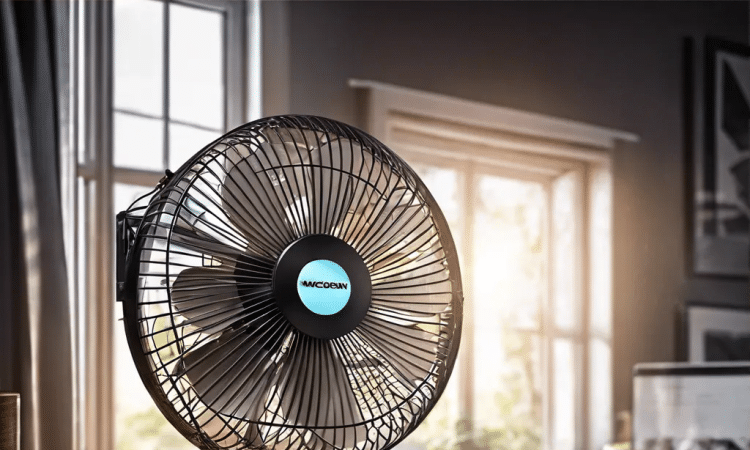
The hot summer “requires” an air conditioner to make the atmosphere… bearable. However, air conditioning is not always available – either we have respiratory problems that are made worse by its use, or we can’t install it for whatever reason, or our finances don’t allow it.
In these cases, the… humble fan comes to our rescue, which under certain circumstances can be used properly and intelligently and can be an economical and ecological way to cool your home.
“Fans are a great way to save energy and money,” Nicole Miranda, a sustainable cooling researcher at Oxford University, told Time. “While air conditioners work by cooling the air and making it less humid, a task that is highly energy-intensive, fans require much less electricity as they simply move the air.”
“To get the most out of your fan, experiment with different practices and strategies. Every home is different and using fans may not work for everyone in the same way,” says Patricia Fabian, professor of environmental health at Boston University. Below are some ideas on how you can use your fans intelligently and in different ways.
If you have an air conditioner, one practice worth trying is to run it at a higher temperature and turn on the fan at the same time. This way you’ll save on electricity, benefit the planet and get the same cool feeling that a full blast air conditioner would give you. According to research reported by Ollie Jay, a professor of thermal physiology at the University of Sydney, participants noticed no difference in the feeling of coolness in these two different cooling practices. “The study found that people feel equally cool in a 27 degree Celsius room with air conditioning and fans, and in a 22 degree Celsius room with air conditioning without fans,” Jay says.
Using fans with the air conditioner is a great way to break the vicious cycle caused when heat forces people to boost cooling in the air conditioner, which increases the temperature in the outdoor environment, creating even more need for air conditioning.
Experts argue that the most effective type of fan is the ceiling fan, because by pushing down the air it blows and cools all sides of the body. It also helps circulate stagnant, warm air in the higher layers of the room. On the other hand, of course, Stefano Schiavon, a professor of architecture and engineering at the University of Berkeley, who studied different types of fans, found little difference in their effectiveness.
The direction in which the fan is facing plays an important role. You’ll feel cooler if you point it at your torso and cover as much of your body as possible with airflow, especially the parts not covered by clothing.
The speed of the fan is also important. “When it’s too fast, it can dry out the eyes,” says Jay. This problem can be addressed with goggles, but there’s no reason to go through this process, because at one speed and above you won’t feel any cooler than the higher fan speed. The ideal speed is the average speed on a floor fan located at a distance of one meter.
It is not enough to simply place a fan at the window. You need a more thoughtful strategy. The first rule is to use the window fan early in the morning or during the night when the temperature outside has dropped. Its direction is also very important in this case. The fan should be pointed inward to draw the cooler air from outside into the house and cool it down. Try placing another window fan on the diametrically opposite side of the house, if there is a window, pointing outwards to draw the warm air out of the house and increase the overall airflow.
Periodically check the quality of the outside air and don’t use window fans if there is heavy exhaust or fire smoke outside, because all you will do is direct it into your home.
As the day progresses, the outside temperature will rise, outpacing the inside temperature. When this happens, close all windows to keep the cool air inside and turn on the fans.

